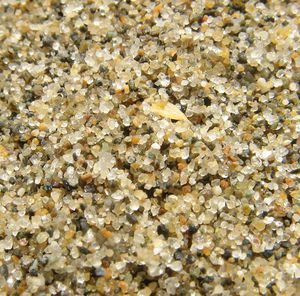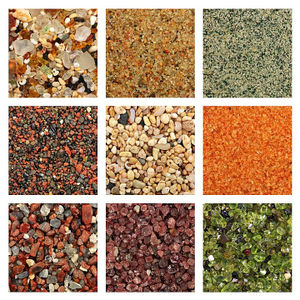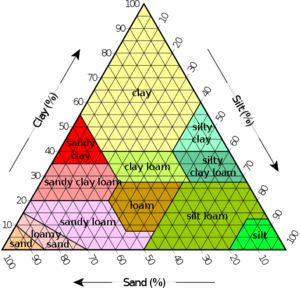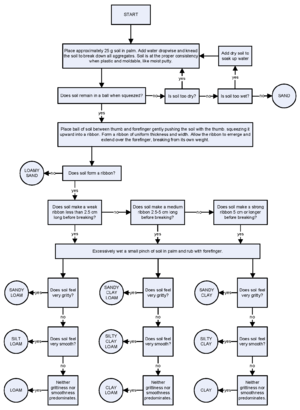Sand

Overview
Sand is a combination of broken-down grains of rock and minerals that forms from weathering. It may also contain biogenic material, like shells, coral, seaweed, or more. Grains smaller than sand are silt and grains larger are gravel. The word sand comes from the Proto-Germanic word sandam. [2]
Formation
Sand is the result of the breakdown of a variety of inorganic and organic materials. It is broken down via physical and chemical weathering. This could be from water, air, or other sand grains. It could be weathered chemically by minerals reacting with water, or other substances. Physical and chemical weathering tend to be a bit indistinguishable from each other when it comes to the formation of sand. [1] They support each other and occur at the same time. The older the grains, the smoother they are, young grains typically have sharper edges. [4]
Composition

Sand ranges in size from 1/16th to 2mm. [1] One of the most common possible materials is Quartz, although it can be composed of a large variety of minerals and materials. The most common tan beach sand is composed of quartz, some form of iron oxide (this reacts with oxygen to form red/tan material), feldspar, and other assorted rocks, minerals, or organic materials. [3]
Many different locations around the world are known for their distinctly colored sand, like pink sand from Utah, black sand from volcanic areas, green sand from Hawaii, etc. These unique sands all have compositional reasons for their specific color. For example, white sands often are largely composed of shells or skeletons of marine animals. Pink sands are often from single-celled organisms Homotrema rubrum, which possesses red/pink shells. Green sands are often composed of Olivine, and black sands are often composed of volcanic rock. There are many other specific sands that have a very specific composition unique to them. [5]
Soil Texture


Sand is an important component in many soils. It's one of the 3 base components for soil according to the Soil Textures triangle, the others being silt and clay. These 3 combine in distinct ratios to make different soil types, like loam, silt loam, sandy clay, etc. The soil classification can be determined by feel, via flowchart, or by the hydrometer method. [6]
Ecology
Sand can form dunes, which are mounds of sand piled up from the wind. They migrate with the prevailing wind, sand grains picked up on the windward side and deposited on the leeward side. They are often in a state of flux and do not remain in the same location. This makes it difficult for any vegetation to take root and grow. Especially since water drains so easily through sand and sandy soil mixtures. Even if there are sufficient rains, the sand/soil may not hold water for long. Some sandy locations have especially arid environments, like the Sahara desert, or the Gobi desert. Other locations have a much more moderate climate, these places are more likely to develop vegetation. When vegetation does manage to take root, it begins to foster a small ecosystem.
Some arid desert dune plant types include perennial grasses like Pleuraphis rigida, some perenial herbs like Artemisia filifolia or shrubs like Ephedra trifurca and Eriogonum deserticola. In more humid areas, sand dunes can be populated by species like Ammophila breviligulata, Uniola paniculata, Calamovilfa longifolia. As dune vegetation stabilizes, it may form successional ecosystems like prairies, with occasional shrubs and trees, which may eventually form more forested communities. [7] The Sleeping Bear Dunes of Michigan support populations of cottonwood trees, which have a fast growth rate and a very connected root network that helps hold sand in place. [8]
References
[1] Sepp, Siim. "What is Sand" SandAtlas.org, Retrieved April 10, 2021, from https://www.sandatlas.org/sand/
[2] Harper, Douglas. “Sand.” Online Etymology Library, Etymonline.com, Retrieved April 10, 2021, from www.etymonline.com/word/sand.
[3] NOAA. "How does sand form?" National Ocean Service, oceanservice.noaa.gov, Retrieved April 10, 2021, from https://oceanservice.noaa.gov/facts/sand.html
[4] Adams, Dennis. "Beach Sand: What Is It, Where It Comes and How It Gets Here" Beaufort County Library, Retrieved April 10, 2021, from https://web.archive.org/web/20091201183346/http://www.beaufortcountylibrary.org/htdocs-sirsi/beachsan.htm
[5] "Seaweed also plays a role in the formation of sand" Ocean Watch, Retrieved April 10, 2021, from http://www.susanscott.net/Oceanwatch2002/mar1-02.html
[6] "Estimating Soil Texture" University of Colorado Boulder, Retrieved April 10, 2021, from https://culter.colorado.edu/~kittel/SoilTriangle&Tests_handout.pdf
[7] "Sand Dune Ecology" Encyclopedia.com, Retrieved April 10, 2021, https://www.encyclopedia.com/environment/encyclopedias-almanacs-transcripts-and-maps/sand-dune-ecology
[8] "Dune Ecology" National Park Service, nps.gov, Retrieved April 10, 2021, https://www.nps.gov/slbe/planyourvisit/psduneecology.htm